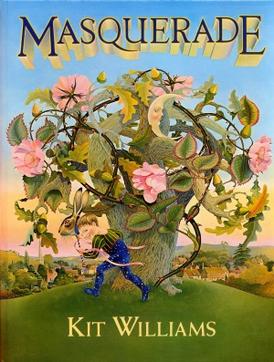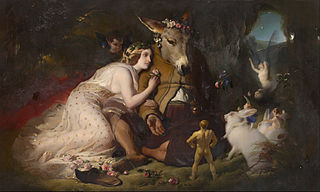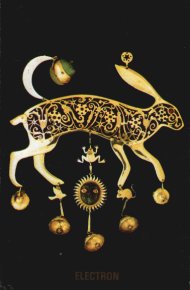
Milton Keynes is a city and the largest settlement in Buckinghamshire, England, about 50 miles (80 km) north-west of London. At the 2021 Census, the population of its urban area was over 256,000. The River Great Ouse forms the northern boundary of the urban area; a tributary, the River Ouzel, meanders through its linear parks and balancing lakes. Approximately 25% of the urban area is parkland or woodland and includes two Sites of Special Scientific Interest (SSSIs).

Cheltenham, also known as Cheltenham Spa, and sometimes called "the Garden Town of England", is a spa town and borough on the edge of the Cotswolds in the county of Gloucestershire, England. Cheltenham became known as a health and holiday spa town resort, following the discovery of mineral springs in 1716, and claims to be the most complete Regency town in Britain.

Newport is a market town in the borough of Telford and Wrekin in Shropshire, England. It lies 7 miles (11 km) north-east of Telford town centre, 12 miles (19 km) west of Stafford, and is near the Shropshire-Staffordshire border. The 2001 census recorded 10,814 people living in the town's parish, which rose to 11,387 by the 2011 census.

Masquerade is a picture book, written and illustrated by Kit Williams and published in August 1979, that sparked a treasure hunt by including concealed clues to the location of a jewelled golden hare that had been created and hidden somewhere in Britain by Williams. The book became the inspiration for a genre of books known today as armchair treasure hunts.

A scavenger hunt is a game in which the organizers prepare a list defining specific items, which the participants seek to gather or complete all items on the list, usually without purchasing them. Usually participants work in small teams, although the rules may allow individuals to participate. The goal is to be the first to complete the list or to complete the most items on that list. In variations of the game, players take photographs of listed items or be challenged to complete the tasks on the list in the most creative manner. A treasure hunt is another name for the game, but it may involve following a series of clues to find objects or a single prize in a particular order.

Treasure: In Search of the Golden Horse is a treasure hunting puzzle published in 1984 by the Intravision production company. It was conceived as a story-based contest by filmmaker Sheldon Renan similar in concept to that of Kit Williams' book Masquerade. The puzzle was presented in two formats, one in an elaborate book illustrated by Jean-Francois Podevin and published by Warner Books, and the other a direct-to-video motion picture filmed by Renan and starring Doryan Dean with Elisha Cook, Jr. in a supporting role. Voice-over narration was provided by actor Richard Lynch with music by composer Jesse Frederick. The film was first aired on cable television and subsequently sold on VHS, Capacitance Electronic Disc, and Laserdisc formats by Vestron Video.

Titania is a character in William Shakespeare's 1595–1596 play A Midsummer Night's Dream.

Central Milton Keynes is the central business district of Milton Keynes, Buckinghamshire, England and a civil parish in its own right, with a town council.

Campbell Park is the name of the central park for Milton Keynes (England) and of a ward of Central Milton Keynes civil parish..

The Concrete Cows in Milton Keynes, England are an iconic work of sculpture, created in 1978 by the American artist Liz Leyh. There are three cows and three calves, approximately half life size.

The Lowry is a theatre and gallery complex at Salford Quays, Salford, Greater Manchester, England. It is named after the early 20th-century painter L. S. Lowry, known for his paintings of industrial scenes in North West England. The complex opened on 28 April 2000 and was officially opened on 12 October 2000 by Queen Elizabeth II.

An automaton clock or automata clock is a type of striking clock featuring automatons. Clocks like these were built from the 1st century BC through to Victorian times in Europe. A Cuckoo clock is a simple form of this type of clock.

The Central Milton Keynes shopping area is a regional shopping centre located in Milton Keynes, Buckinghamshire, England which is about 50 miles (80 km) north-west of London. It comprises two adjacent shopping centres, the grade II listed building thecentre:mk which opened in 1979, and Midsummer Place opened in 2000. The centre:mk is anchored by John Lewis and Marks & Spencer. The complex is the 14th largest shopping centre in the UK, with the size of 120,773 sq metres.
Derek John Walker was a British architect primarily associated with urban planning and leisure facilities architecture, through his firm Derek Walker Associates.

Hareraiser was a video game released in 1984 in the UK in two parts: Prelude and Finale. The game was published for Acorn Electron, Amstrad CPC, BBC Micro Model B, Commodore 64, VIC-20, Dragon 32, MSX, Oric Atmos, and ZX Spectrum at £8.95 for each part.

The Clock Tower is a free-standing clock tower in the centre of Brighton, part of the English city of Brighton and Hove. Built in 1888 in commemoration of the Golden Jubilee of Queen Victoria, the distinctive structure included innovative structural features and became a landmark in the popular and fashionable seaside resort. The city's residents "retain a nostalgic affection" for it, even though opinion is sharply divided as to the tower's architectural merit. English Heritage has listed the clock tower at Grade II for its architectural and historical importance.

Rabbits and hares (Leporidae) are common motifs in the visual arts, with variable mythological and artistic meanings in different cultures. The rabbit as well as the hare have been associated with moon deities and may signify rebirth or resurrection. They may also be symbols of fertility or sensuality, and they appear in depictions of hunting and spring scenes in the Labours of the Months.

The Bee on the Comb is an armchair treasure hunt book, written and illustrated by Kit Williams and published in May 1984. It is a follow-up to Williams' previous treasure hunt book Masquerade, although not a direct sequel.

Birmingham Market Hall was a municipal market hall in the Bull Ring area of Birmingham, England, from 1835 until 1940, when the interior and roof were destroyed by wartime bombing; although the shell of the building remained in use until final demolition in the 1960s.



















